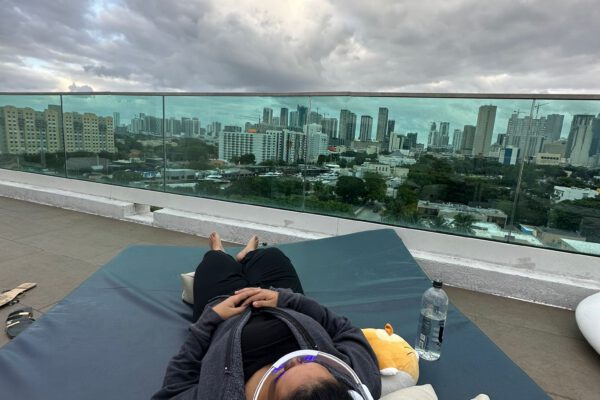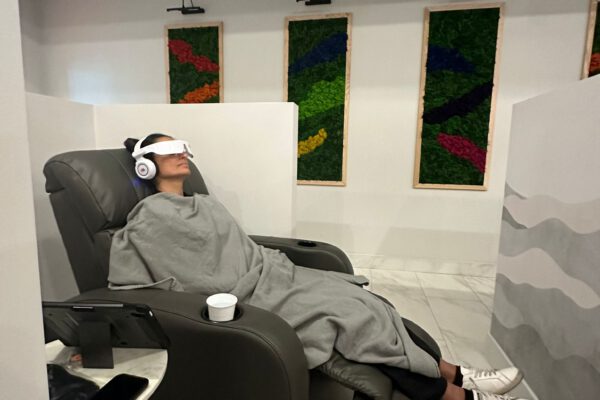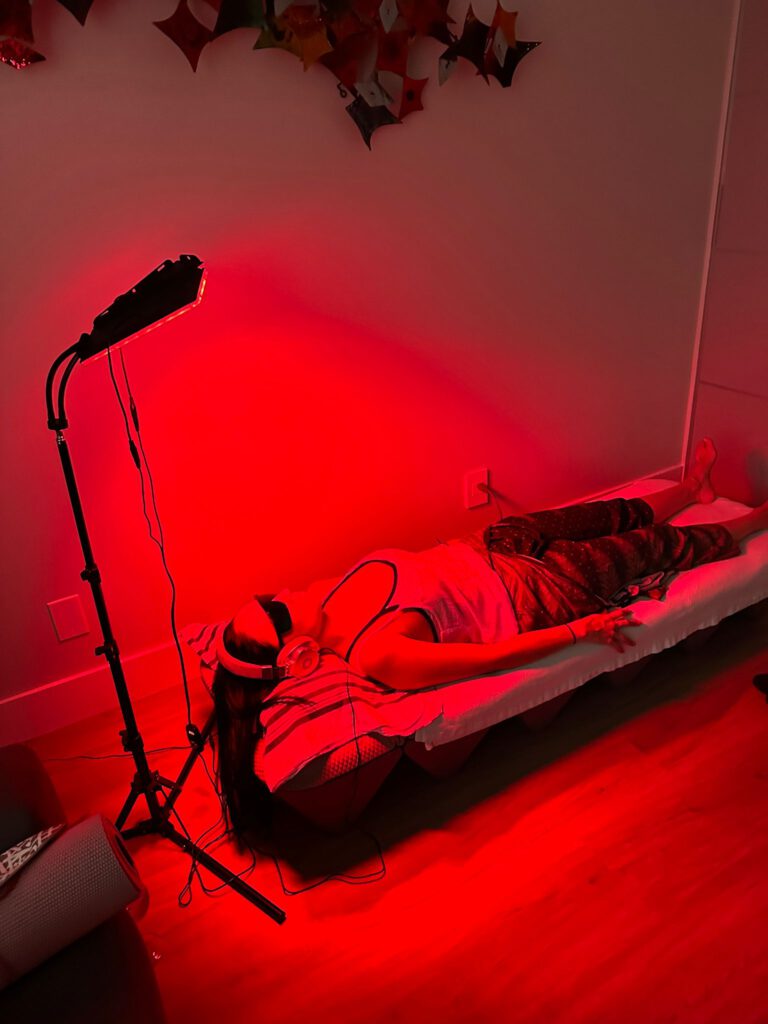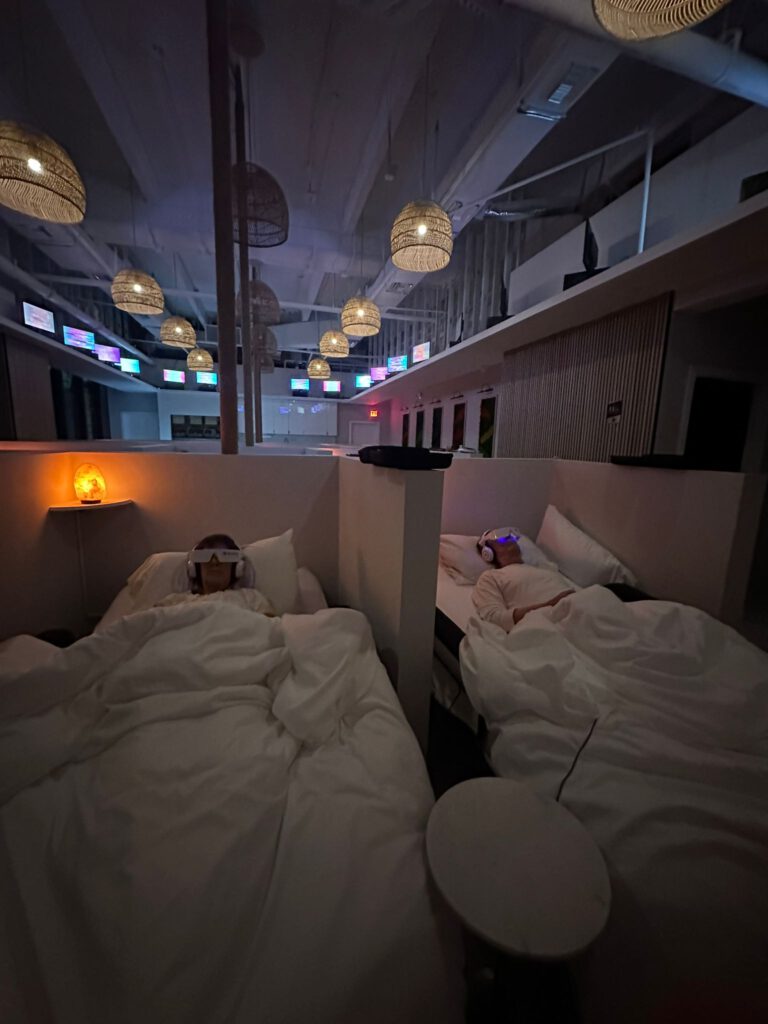Jesus David Quiceno

I developed a passion for helping others at an early age.
At the age of 9, my brother regained consciousness, and miraculously, my asthma disappeared. However, I faced new challenges as my mom and dad passed away. I experienced seizures during stressful situations. As I became able to make my own decisions, I expressed a desire to live on a farm. It was there that my healing journey began. Surrounded by nature, dogs, horses, cows, lakes, and rivers, I found peace and was able to release my anxiety and stress. My seizure problem completely disappeared, and I attribute much of my healing to the presence of nature and my belief in God.
The theta brain wave and body experience
Includes
Brian tap technology
Opus vibroacoustic bed.
Heart rate variability scan
This experience allows a person to enter a state of complete relaxation in order to release unwanted feelings and emotions.
Returning to my brother's journey, after he regained consciousness, we embarked on a long therapy process. Today, he is an independent individual who lives and works on his own. Although he still experiences limited control on his right side, he has learned to adapt and compensate for these challenges.
Inspired by my childhood experiences, I devoted my life to helping others. I obtained my food science degree from Broward College, and I also obtained certifications in personal training at various levels. After working with athletes, I had the opportunity to train and interact with children with autism, which ignited my passion for helping children with special needs. I furthered my education and graduated from a rigorousprogram at Keiser University in 2014.
Serving the community and helping children is my passion and life purpose. I will continue dedicating my life to developing new therapeutic skills to better serve others. There is always room for improvement.

Occupational therapy activities.
Cognitive behavioral therapy
Cognitive Behavioral Therapy (CBT) is a form of psychotherapy that focuses on the relationship between a person’s thoughts, feelings, and behaviors. It is based on the idea that our thoughts and beliefs influence how we feel and behave. CBT aims to help individuals identify and change negative or unhelpful thought patterns and behaviors that may contribute to their emotional distress or mental health problems. It is a goal-oriented and practical approach that involves collaboration between the therapist and the individual to develop coping strategies and promote positive changes in thinking and behavior. CBT has been shown to be effective in treating a wide range of mental health conditions, such as anxiety disorders, depression, phobias, and obsessive-compulsive disorder.
Children life coaching
Children life coaching is a form of coaching specifically designed to support and empower children in reaching their full potential. It involves working with a trained coach who helps children develop essential life skills, set and achieve goals, build self-confidence, manage emotions, improve communication, and enhance their overall well-being. Children life coaching focuses on nurturing their strengths, fostering resilience, and providing guidance and tools to navigate challenges and make positive choices. It helps children develop a positive mindset, improve problem-solving skills, and cultivate self-awareness and self-esteem.
Parent and family education
Overall, parent and family education aims to empower parents and caregivers with the knowledge and tools they need to create a nurturing and supportive environment for their children, promote positive family dynamics, and foster the overall well-being of the entire family unit.
Cooking activities
Cooking can be a therapeutic activity that offers stress relief, creative expression, mindfulness, a sense of achievement, and promotes well-being. It allows individuals to relax, be creative, focus on the present moment, and feel accomplished. However, it’s important to consider individual circumstances and consult with professionals if needed.
Equine therapy
Equine therapy, also known as equine-assisted therapy or horse therapy, is a therapeutic approach that involves interactions between individuals and horses. It is used as a complementary treatment for various physical, mental, emotional, and behavioral challenges. The gentle and non-judgmental nature of horses can help individuals build trust, improve communication skills, develop self-confidence, enhance emotional regulation, and promote relaxation and well-being. Equine therapy can be beneficial for people of all ages, including those with autism spectrum disorders, post-traumatic stress disorder (PTSD), anxiety, depression, attention-deficit/hyperactivity disorder (ADHD), and other conditions.
Vibro acustic bed (opus )
A vibroacoustic bed is a specialized bed that uses vibrations and sound to promote relaxation and well-being. It delivers low-frequency vibrations throughout the body and incorporates soothing music or sounds. This therapy promotes relaxation, reduces stress, and can improve sleep quality. While not a medical device, vibroacoustic beds can complement relaxation and wellness practices.
Breathwork facilitation
Breathwork facilitation is a practice where a trained practitioner guides individuals through intentional breathing techniques to promote physical, mental, and emotional well-being. It involves various breathing techniques .The facilitator creates a safe environment and may incorporate relaxation techniques, visualization, and dialogue to deepen the experience. Benefits include stress reduction, improved clarity, self-awareness, emotional release, and overall well-being.
Therapeutic exercises Isotonic and isometric exercises
Isotonic exercises involve moving joints and muscles through a range of motion, while isometric exercises involve contracting muscles without movement. Isotonic exercises can be further divided into concentric and eccentric movements. Isotonic exercises improve strength, endurance, flexibility, and promote muscle growth. Isometric exercises improve muscle strength, stability, and can aid in rehabilitation and injury prevention. It’s important to include both types of exercises in a therapy regimen for overall strength and wellness
Recreational therapy
Recreational therapy is a healthcare profession that uses enjoyable activities to improve the well-being of individuals with disabilities or illnesses. It focuses on physical, cognitive, emotional, and social needs and aims to enhance functional abilities and overall quality of life. Recreational therapists use a wide range of activities to address specific goals and promote physical fitness, cognitive development, social interaction, and self-esteem. It is a holistic approach that can be used in various settings to complement other treatment methods.
Sound therapy
Is a holistic practice that uses sound vibrations to promote relaxation, reduce stress, and enhance overall well-being. It involves using various instruments, such as singing bowls, gongs, drums, and tuning forks, to create specific frequencies and tones that resonate with the body and mind. The vibrations and harmonics produced by these instruments help to balance energy, release tension, and promote a sense of calm and inner peace. Sound therapy can be used as a standalone practice or combined with other therapies like meditation or massage to enhance their effects.
Brain tap technology
Brain Tap technology is a form of audio-visual entrainment (AVE) that combines light and sound to help induce a relaxed and focused state of mind. It involves the use of specialized headphones and a visor equipped with LED lights that flicker at specific frequencies along with synchronized audio tracks.
Academic activities.
Engaging in academic activities can also have therapeutic benefits. Academic activities, such as reading, studying, writing, and problem-solving, can stimulate the mind, improve cognitive skills, enhance memory, and promote mental well-being. These activities can also provide a sense of accomplishment, boost self-esteem, and increase confidence. Additionally, academic pursuits can serve as a form of self-expression, exploration of ideas, and personal growth. However, it’s important to maintain a balance and prioritize self-care to prevent burnout.
Therapeutic massages
Therapeutic massages are a type of massage therapy that is aimed at providing therapeutic benefits to the recipient. Unlike relaxation massages, which mainly focus on providing relaxation and stress relief, therapeutic massages are designed to target specific issues or conditions, such as muscle pain, tension, injuries, or chronic conditions. Therapists may use a variety of techniques, including deep tissue massage, trigger point therapy, myofascial release, and stretching, to address the specific needs of the individual. Therapeutic massages can help reduce pain, improve flexibility and mobility, enhance circulation, promote relaxation, and support overall well-being. They are often used as a complementary therapy alongside other medical treatments or rehabilitation programs.
Swimming
Whether for children or adults, swimming lessons provide the opportunity to learn a valuable life skill, enjoy water activities safely, and potentially pursue competitive swimming or other aquatic sports.
Ergonomics
Ergonomics allows the therapist to designing and arranging objects, tasks, and environments to fit the capabilities and limitations of the human body. It focuses on optimizing the interaction between people and their physical and cognitive workspaces to enhance comfort, safety, efficiency, and overall well-being. Ergonomics considers factors such as posture, repetitive movements, work tools and equipment, lighting, noise, and environmental conditions to minimize the risk of musculoskeletal disorders, fatigue, and other work-related injuries. By applying ergonomic principles, workplaces can be designed to promote health, productivity, and satisfaction for individuals.



















